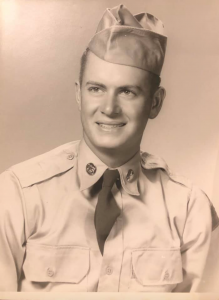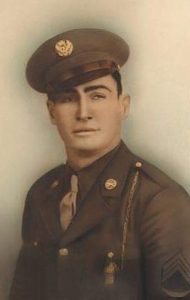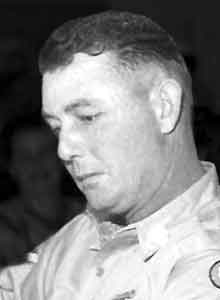Brunette, Floyd Lee
Army Private 1st class

Floyd Lee Brunette, age 21, from Texas, Robertson county.
Service era: Korea
Date of death: Friday, July 10, 1953
Death details: On July 6, 1953, a large Chinese Communist Forces (CCF) unit attacked and overran the U.S. Army outposts on Pork Chop Hill in an attempt to seize whatever territory possible before the impending armistice agreement. After fighting for the position for four days, on July 10, the 7th Infantry Division Commander determined that the CCF disregard for casualties and desire to hold the outpost outweighed the position’s tactical value, and ordered a withdrawal that was eventually completed on July 11. The U.S. never again controlled Pork Chop Hill, preventing thorough recovery efforts for those who were killed or went missing during the fighting. Corporal Floyd Lee Brunette entered the U.S. Army from Texas and was a member of Company K of the 3rd Battalion, 32nd Infantry Regiment, 7th Infantry Division. He went missing in action on July 10, during the withdrawal from Pork Chop Hill, though exact circumstances surrounding his loss are unknown. He was never reported to be a prisoner of war, and his remains were not identified among those returned to the U.S. following the ceasefire. He remains unaccounted for. Today, Corporal Brunette is memorialized on the Courts of the Missing at the National Memorial Cemetery of the Pacific.
Source: National Archives, Defense POW/MIA Accounting Agency

 Death details: On July 5, 1950, Task Force Smith, the first U.S. ground element to engage North Korean People’s Army (NKPA) troops, was defending a position north of Osan, South Korea. The Task Force’s goal was to delay enemy forces by blocking their movement down the road south from Suwon to Taejon, which was a major avenue of advance for the NKPA. That morning, the Task Force was engaged by a column of enemy tanks. The anti-tank weapons that the infantrymen employed were ineffective, and a large number of tanks broke through their position. Task Force Smith was forced to withdraw to the south, suffering heavy casualties in the process. Master Sergeant Harvey Thomas Vann, who joined the U.S. Army from Texas, served with C Company, 1st Battalion, 21st Infantry Regiment, 24th Infantry Division. His unit was part of Task Force Smith, and he was captured by enemy forces on July 5. He was marched to the Apex prison camps in North Korea, and died of exhaustion and pneumonia at the camp at Hanjang-ni in early January 1951. He was buried on a hillside just above the village; however, his remains were not identified among those returned to U.S. custody after the ceasefire. Today, Master Sergeant Vann is memorialized on the Courts of the Missing at the National Memorial Cemetery of the Pacific.
Death details: On July 5, 1950, Task Force Smith, the first U.S. ground element to engage North Korean People’s Army (NKPA) troops, was defending a position north of Osan, South Korea. The Task Force’s goal was to delay enemy forces by blocking their movement down the road south from Suwon to Taejon, which was a major avenue of advance for the NKPA. That morning, the Task Force was engaged by a column of enemy tanks. The anti-tank weapons that the infantrymen employed were ineffective, and a large number of tanks broke through their position. Task Force Smith was forced to withdraw to the south, suffering heavy casualties in the process. Master Sergeant Harvey Thomas Vann, who joined the U.S. Army from Texas, served with C Company, 1st Battalion, 21st Infantry Regiment, 24th Infantry Division. His unit was part of Task Force Smith, and he was captured by enemy forces on July 5. He was marched to the Apex prison camps in North Korea, and died of exhaustion and pneumonia at the camp at Hanjang-ni in early January 1951. He was buried on a hillside just above the village; however, his remains were not identified among those returned to U.S. custody after the ceasefire. Today, Master Sergeant Vann is memorialized on the Courts of the Missing at the National Memorial Cemetery of the Pacific.